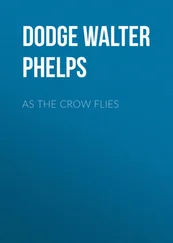Just before recess that afternoon, Mr. March says, “I need a volunteer.” Hands shoot up. Mostly girls. Madeleine has not put up her hand and she feels a bit rude, so she half puts it up in order to be polite. Marjorie Nolan is jabbing the air with her hand, saying, “Oh!” with every jab. Mr. March consults his seating plan. “Marjorie Nolan. You will stay in at recess and do a job of work for me.”
Marjorie looks about proudly as though she expects to see jealous faces. Madeleine is relieved not to have been picked to miss recess, and she is doubly relieved that Marjorie was, because she won’t have to worry about hurting Marjorie’s feelings by avoiding her. The bell goes.
“One at a time, boys and girls, in an orderly fashion.”
After recess they return to see Marjorie installed at Mr. March’s desk. She has a pair of scissors and is cutting out the last of numerous oval shapes from the sheets of yellow bristol board. Mr. March begins pinning them in a vertical row down the left-hand side of the felt bulletin board: each oval bears a name in black Magic Marker, one for every person in the class. There are multiple Cathys, Debbies, Dianes, Carols, Michaels, Johns, Bobbys, Davids and Stephens, so those names are followed by an initial. Across the top of the bulletin board, he pins more ovals: one for every subject. Reading, Writing, Arithmetic, Geography, History, Art.
Mr. March says, “Pay attention, class.” He turns to the felt board and sticks something onto it. When he steps aside you can see what it is. Three felt cut-outs: a hare, a dolphin and a tortoise. “It’s up to you,” he says.
Will you be a speeding hare? An adequate dolphin? Or a stupid tortoise? The tortoise is the only one smiling, which strikes Madeleine as odd unless you think of it as “Ignorance is bliss.”
“Mrs. March made these cutouts and I have found them to be very effective,” says Mr. March — as if he were talking about Ex-Lax, thinks Madeleine, and in order not to think of Mr. March on the toilet she pictures Mrs. March, a benevolent woman with a bun, hunched over a table with a pair of scissors, pining for children of her own. It doesn’t occur to Madeleine to wonder why she assumes the Marches have no children.
She watches Mr. March’s broad grey back as he amasses dolphins, tortoises and hares at the bottom of the bulletin board, peeling them from his soft colourful pile, pressing them to the felt board with finger and thumb. And there they cluster, waiting to embark on their various missions to hop, swim or crawl next to every name in every subject. Madeleine is confident of at least one hare, in reading.
“But fair warning, boys and girls,” Mr. March says in his porridge voice. “Though you may fancy yourselves hares, remember the story of the tortoise and the hare….” His glasses glint at no one in particular; he is looking at them and past them all at once, rather like those iguanas on Wild Kingdom .
“That hare was fast, but he had no powers of concentration …”—iguanas have somewhat porridgy skin, and they stare like Mr. March—“like Madeleine McCarthy.”
Madeleine blinks. The class giggles. Everyone else has their spelling books open at page — what? When did that happen? She glances across at Auriel, who tilts her book helpfully — page ten. Madeleine opens her speller: Unit I: blame brakes flake grave slave shame mistake bare rare glare farewell average postage cabbage… .
“… management, military, executive, finance as well as the admin course for junior officers….”
Jack is in his office with his senior staff. The hooks on his halltree have sprouted air force hats; several more are ranked along the window ledge. One or two of his officers are likewise new to the station, so he has invited everyone for a general briefing. Vic Boucher has already gone over the series of special events — visits to and from Air Training Command Headquarters in Winnipeg, visits by school staff to the Staff School in Toronto, intramural curling and volleyball, etc. Now Squadron Leader Nolan is giving a rundown of incoming students. The man speaks into his clipboard; Jack leans forward, the better to concentrate—“Six hundred students in the COS, a hundred and forty flight cadets in the PFS, thirty-eight of them NATO”—but his gaze strays to the hats, then up to the window—“as well, we’ll look to process something like seventeen hundred candidates through the OSU.”
Jack pulls his focus from the blue sky, back to the briefing, as Nolan winds up. “Good stuff.” He drums the eraser end of his pencil lightly on his desk and says, “Are any of you gentlemen familiar with what is known as the case-study method?”
One or two assents from the younger officers.
“Can someone give me the air force definition of leadership?”
A junior instructor, himself an MBA candidate, raises a hand. “Sir, I believe the standard definition goes as follows”—he looks a little lost in his uniform, is it possible that this young man has the slightest interest in aeroplanes? “‘Leadership is the art of influencing others to achieve an aim.’”
He has answered by the book. A real ground-pounder. Name of Vogel. Ironic.
Jack nods. “Close enough,” he says, “but what does it really mean, eh? ‘Influence.’ How? Who sets the ‘aim’? How do you deal with resistance to change?”
A chief instructor, Squadron Leader Lawson, pipes up, “In the military I believe the accepted method is ‘Change or else.’”
Laughter. Jack grins. “That’s right, ‘This won’t hurt a bit, did it?’” More laughter. “In the military,” he continues, “we have a chain of command, and in the heat of battle it’s pretty cut and dried. But in peacetime — extended periods of peace like the one we’re in — the tendency can be toward bureaucratic bloat, a loss of the sense of what it’s all for. Although,” he adds, “lest we forget, even in wartime there’s always some general back in an office sticking pins in a map.” Groans of assent, despite the fact that none except Vic — and Jack, in his way — are veterans. The eldest among the others is a hair too young to have served. Jack continues.
“I’m looking to take a bit of a more sociological approach. That’s what’s been going on for the past while at the good business schools, and it’s been the trend in the real world for a few decades now. We’re talking about something a little different from the traditional ‘sir-yes-sir’ approach. We want to dig a little deeper, get a little more complex, because the world is getting a helluva lot more complex.”
“Better believe it,” says Vic.
“Think of the military as a corporation,” says Jack. “What business are we in? We’re in the peace business. Who are our shareholders? The people of Canada. Our aim is to defend the country. In order to achieve that aim we must identify various objectives: to join with our allies in managing the threat of Soviet expansion; to monitor and respond to perilous situations within our own borders and around the world; to assess risk in the light of present-day weapons of mass destruction. What becomes key? Communication.” He pauses and looks around. The men are relaxed on several chairs scavenged from neighbouring offices. Listening intently. “You may have a crack pilot, but if his ground crew used the wrong wing nut because the engineer submitted the right form to the wrong department whose initials changed last week and the orderly’s bored with paperwork, you’ve got a potentially lethal domino effect.”
“‘And all for the want of a horseshoe nail,’” says Flight Lieutenant Vogel.
Jack pauses. Vogel looks down. Jack continues. “That’s right. The question is, do our officers know how to manage people and the flow of information in order to lead effectively? It’s our job to teach them.”
Читать дальше












